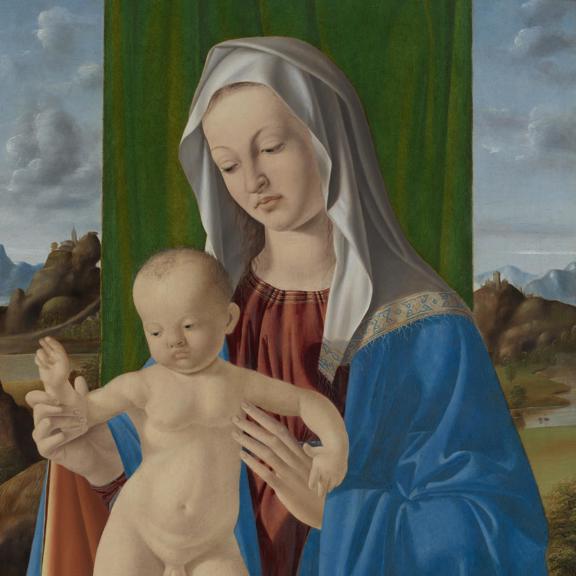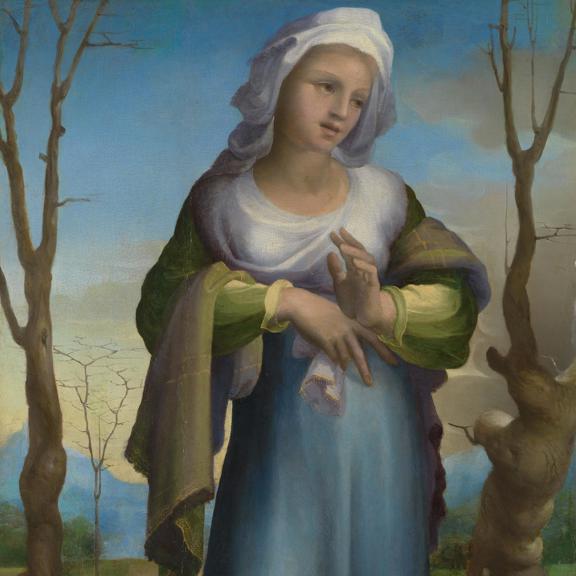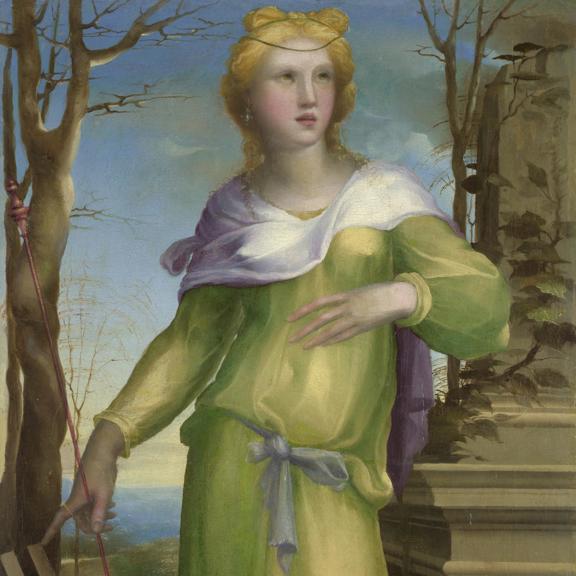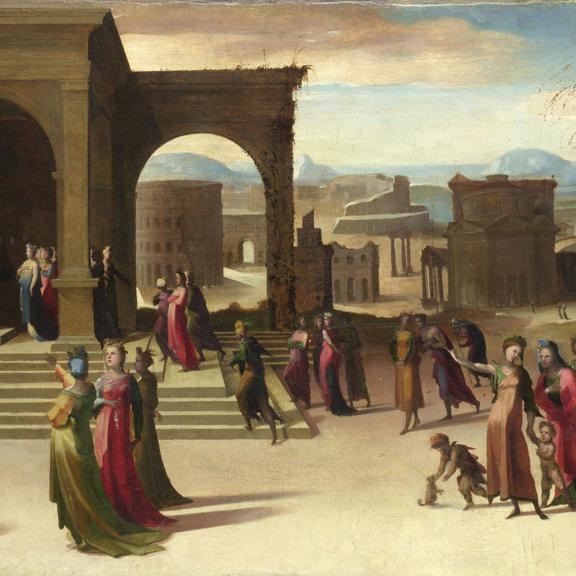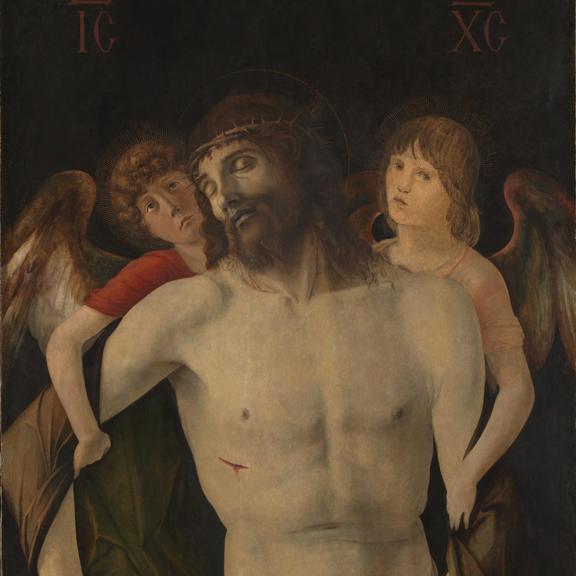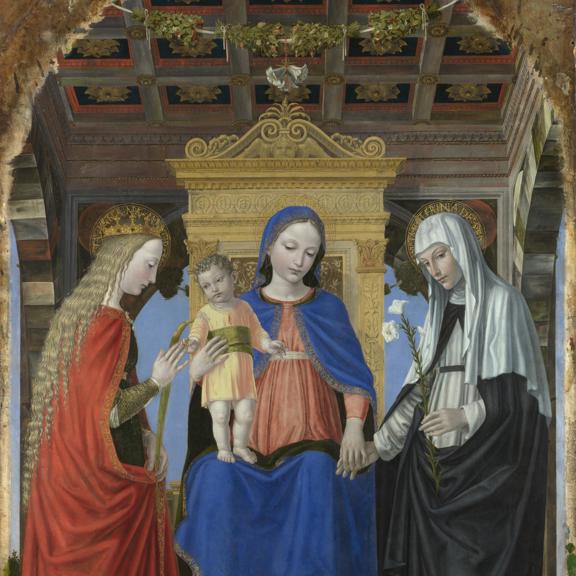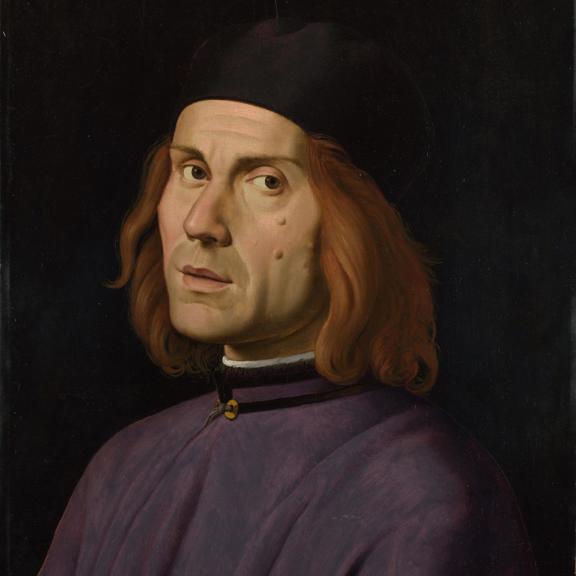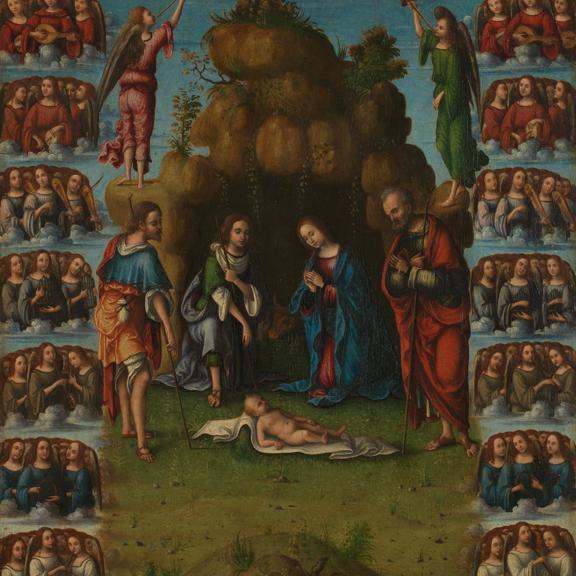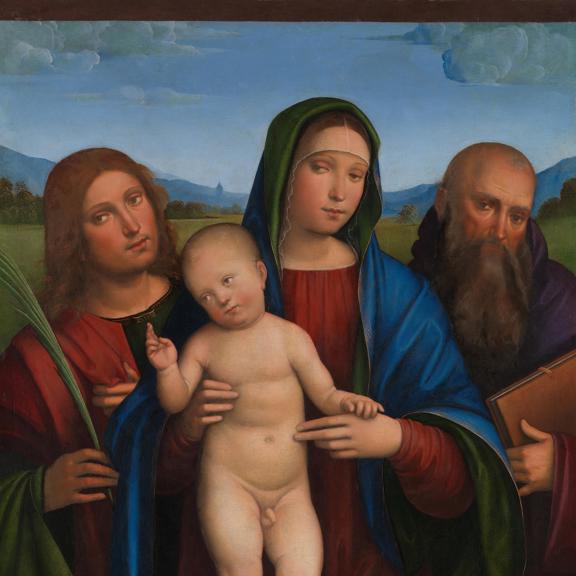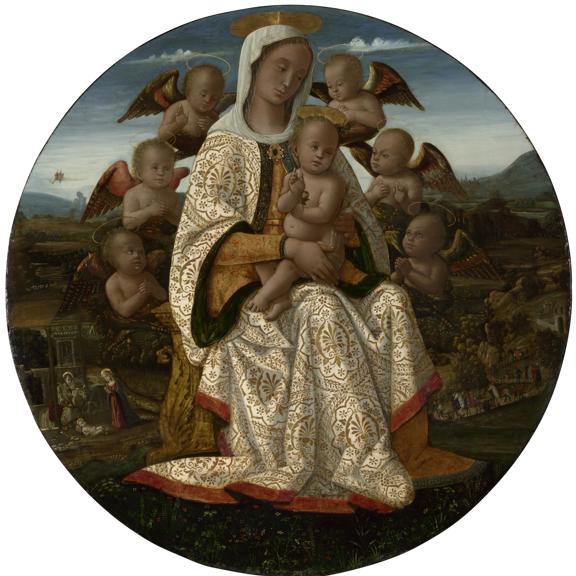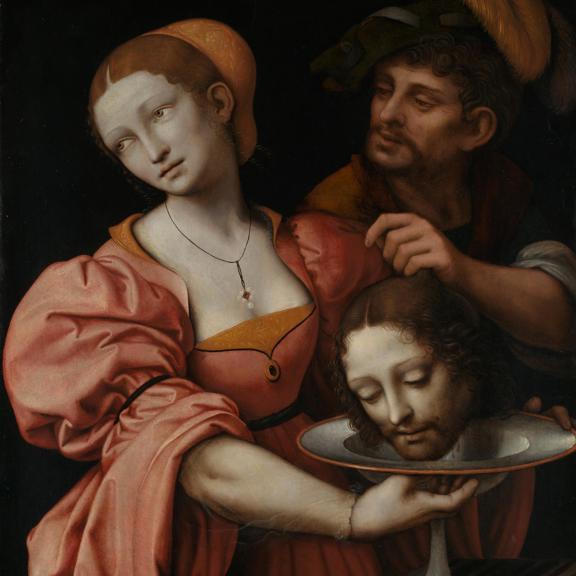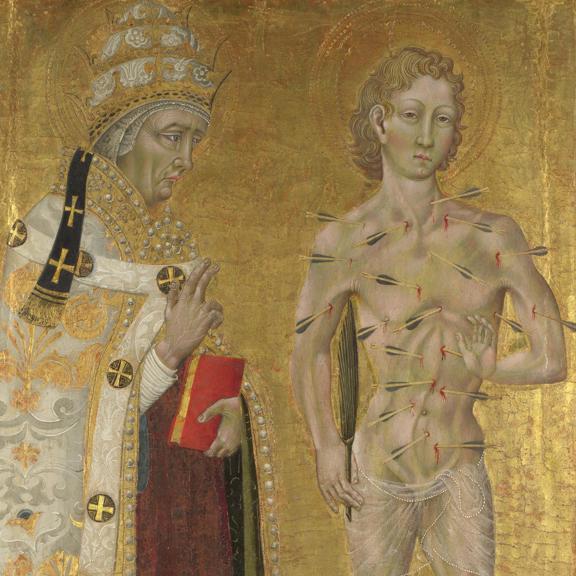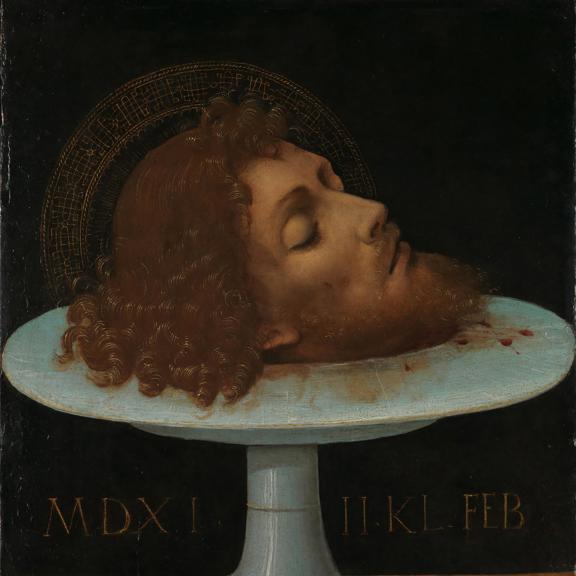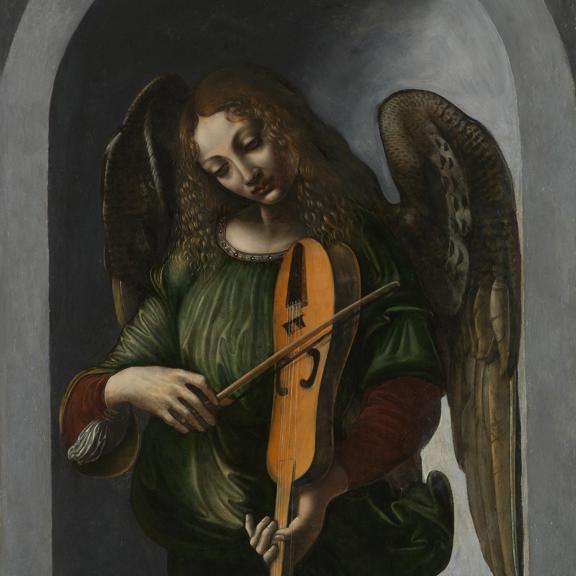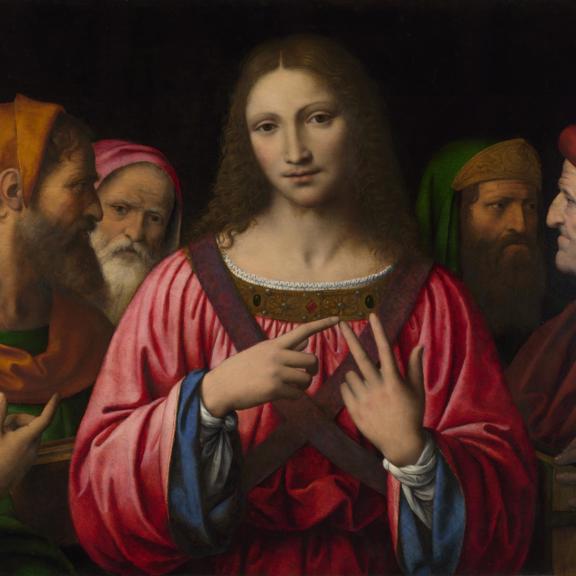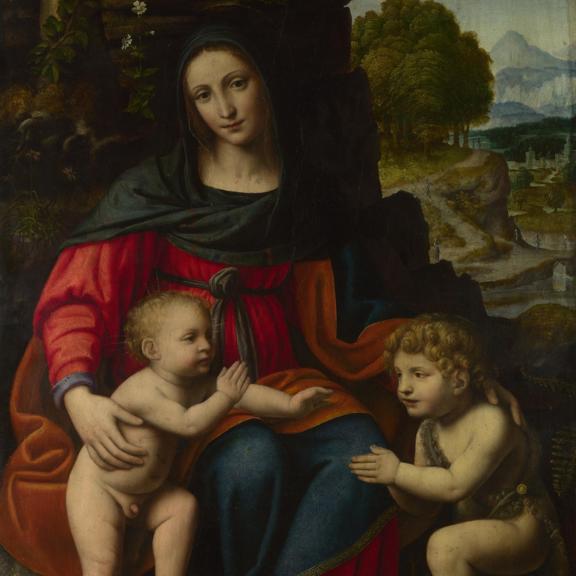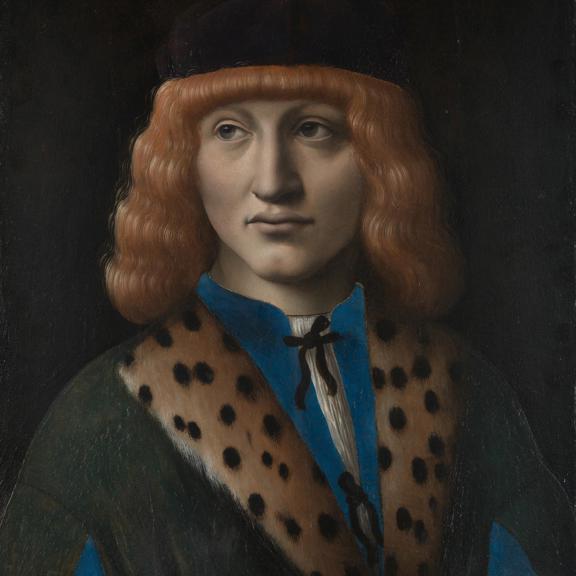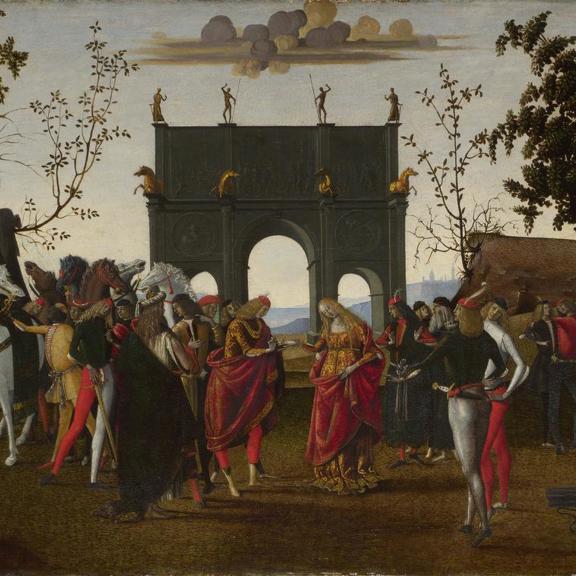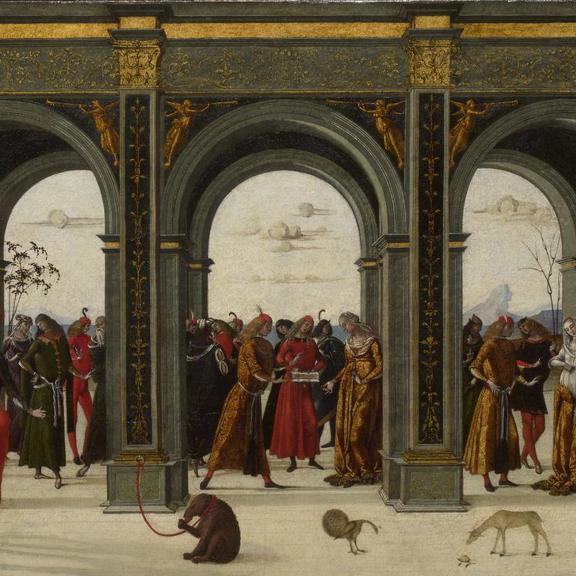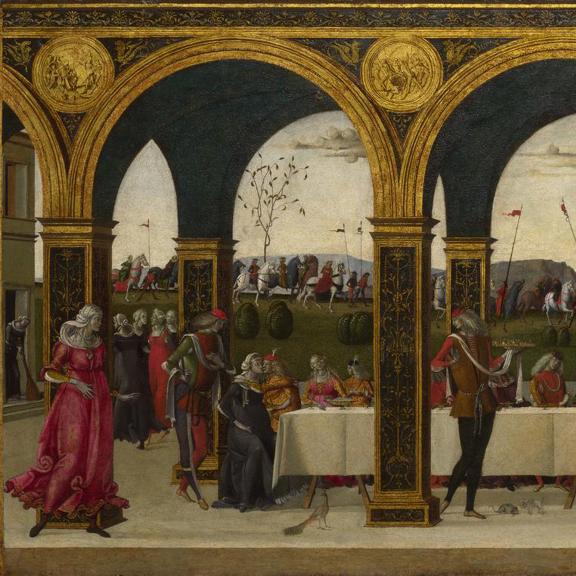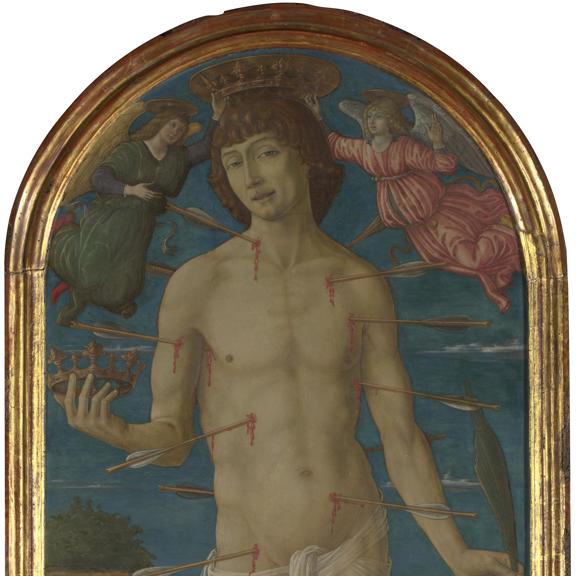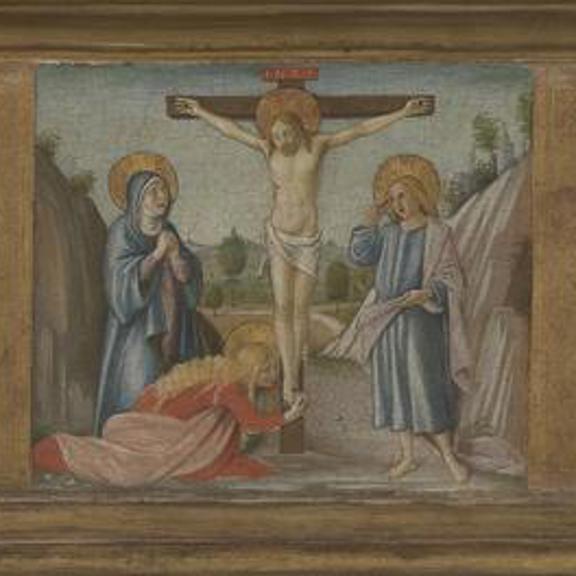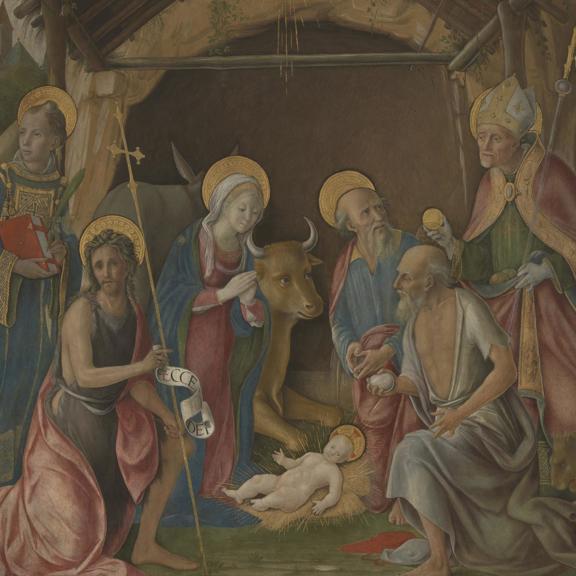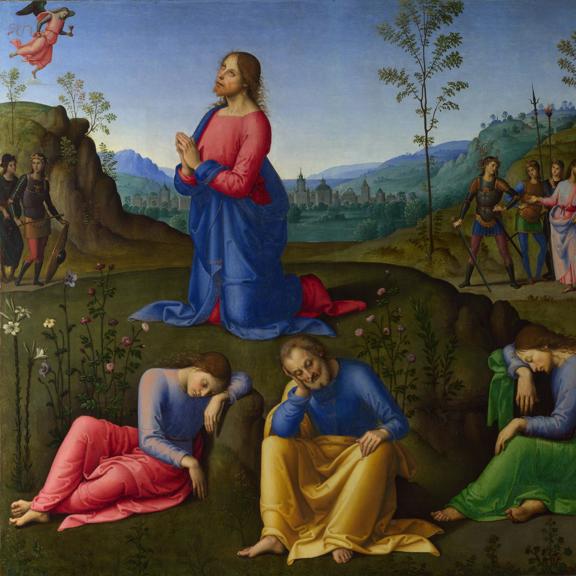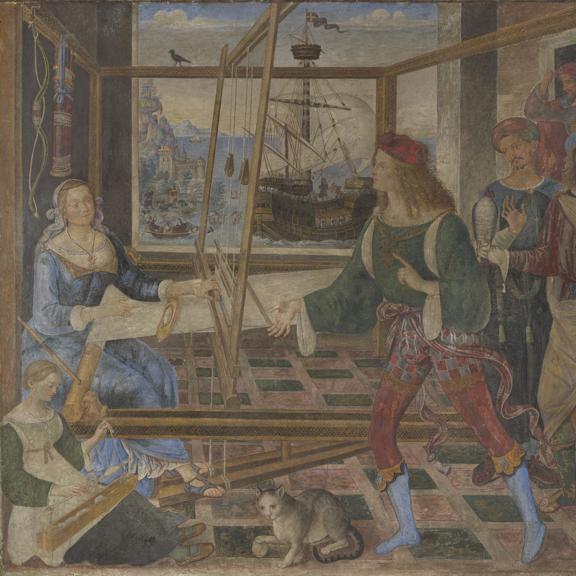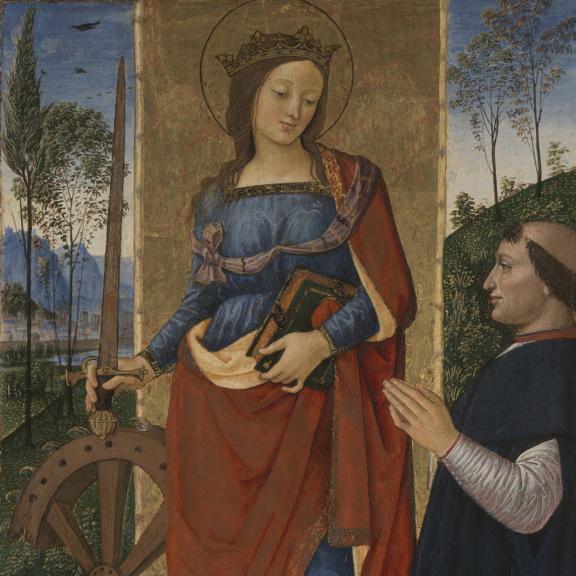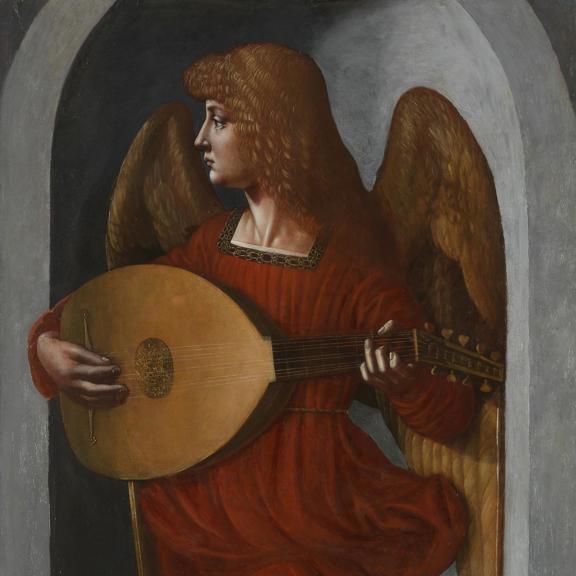Towards the end of the 15th century, a group of artists was active in and around Milan whose work bears the immediate influence of Leonardo da Vinci. They are often referred to as the ‘Leonardeschi’. Leonardo’s followers absorbed different characteristics of his art, which pioneered the combination of detailed naturalism and refined elegance, with which he sought to surpass the beauty of nature.
Other northern Italian artists remained comparatively uninfluenced by the work of Leonardo. The Milanese painters Ambrogio Bergognone and Bramantino looked instead to the local Lombard tradition of painting, as well as to artistic influences from north of the Alps. In Bologna, Francesco Francia and Lorenzo Costa – who later settled in Mantua – were both profoundly impacted by the compositional clarity and soft blending of colour in the work of the Umbrian artist Pietro Perugino (shown in Gallery C).
Although Siena’s international standing was on the wane by the later 15th century, the city remained prosperous, controlling important territories in southern Tuscany and wielding some influence over the affairs of the papacy.
Siena’s civic identity centred on its political independence and its glorious past. Painters such as Giovanni di Paolo and Francesco di Giorgio responded to this nostalgia. In order to evoke the splendour of their Sienese predecessors, such as Duccio, they often chose gilded backgrounds for their paintings and idealised their figures.
In 1487 control over Siena was seized by a group of exiles led by Pandolfo Petrucci. Ruling the city until his death in 1512, Petrucci was suspicious of its republican past. This heralded a new interest in painting from outside Siena, which is exemplified by the fresco cycle commissioned for Petrucci’s palace in the city painted by Luca Signorelli.


